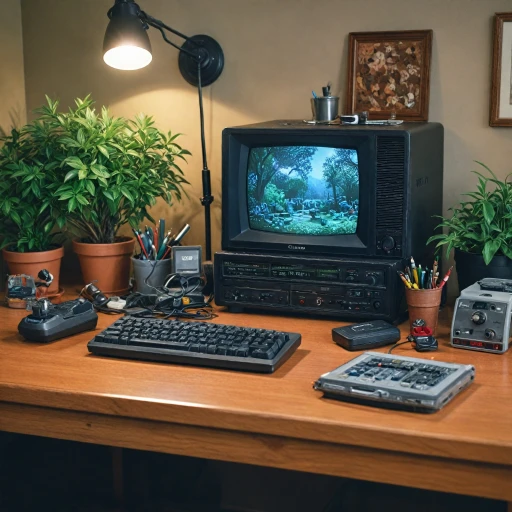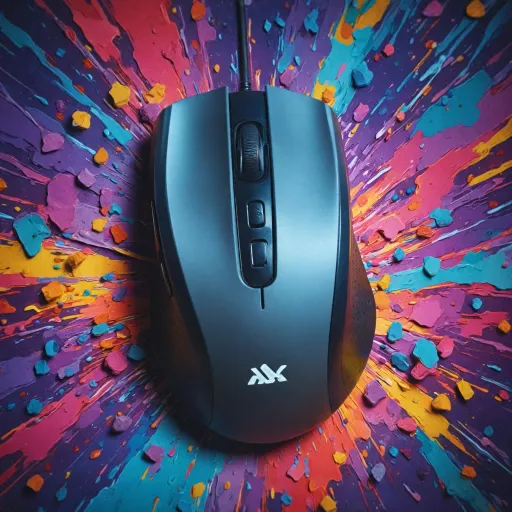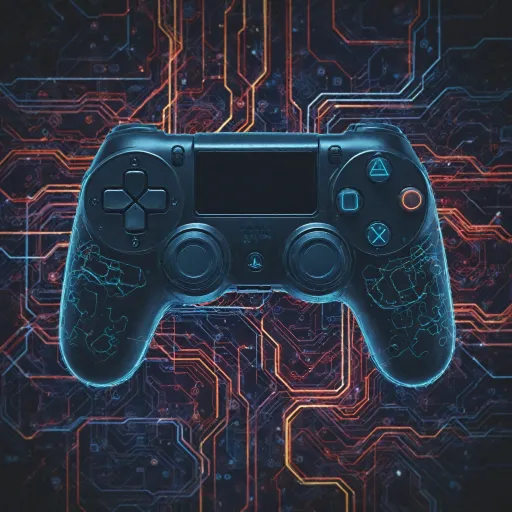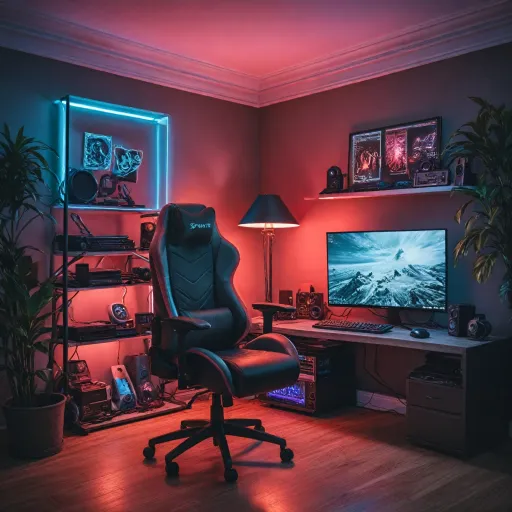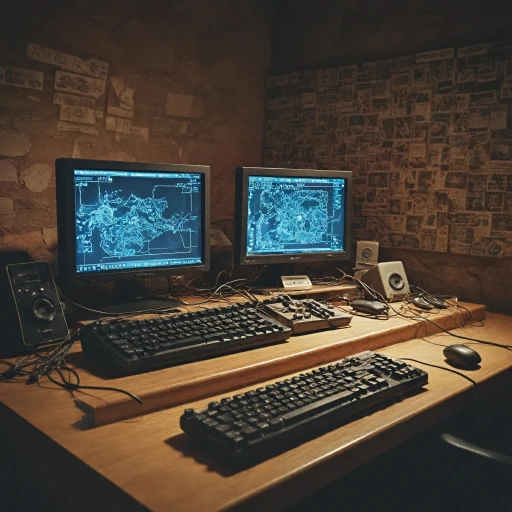
The Importance of DisplayPort Cables in Gaming
The Significance of Connectivity in Gaming Setups
When diving into the immersive world of video gaming, the quality of your setup plays a pivotal role in shaping your experience. A key component often overlooked is the cable, specifically the DisplayPort cable, which serves as a vital link between your gaming console and monitor. This cable ensures that high-resolution video and high bit rate audio are transmitted seamlessly, supporting features like HDR and DSC for a richer display.
The importance of DisplayPort cables in gaming lies in their ability to handle high data rates and maintain stability over long connections. With different versions available, like the standard DisplayPort and mini DisplayPort, users can choose according to their device's requirements. The DisplayPort cable is equipped with a connector that provides a secure fit, often with cable latches, preventing accidental disconnections during intense gaming sessions.
Furthermore, when considering upgrades or comparing with other stock options like HDMI cables, the DisplayPort often comes out on top due to its multi-stream capability and support for higher resolutions. Its ability to deliver a high refresh rate makes it a preferred choice for gamers seeking an edge in competitive play.
In conclusion, the DisplayPort isn't just a simple monitor cable but a crucial component that enhances the overall gaming experience. It ensures that your console's capabilities are fully utilized, whether you're engaging through a standard DisplayPort or taking advantage of its DisplayPort input and output features.
Comparing DisplayPort with Other Cable Types
Exploring the Distinct Features of DisplayPort Cables
When diving into the world of gaming, the role of cables such as DisplayPort is crucial in ensuring an optimal gaming experience. While traditional HDMI cables have been the go-to for many users, DisplayPort cables, particularly with their high resolution and data transfer capabilities, present a compelling alternative.
One of the standout aspects of DisplayPort cables is their ability to support higher resolutions and refresh rates due to their superior bit rate. This makes them a preferred choice for high-performance setups involving computer monitors and advanced gaming consoles. With versions like DisplayPort 1.4, users can enjoy features such as HDR and DSC, enhancing the visual experience significantly.
Furthermore, these cables come equipped with advanced features like multi-stream transport, allowing multiple displays to be daisy-chained together without compromising on video quality. The presence of robust cable latches ensures a secure connection, preventing any unwanted disconnections during intense gaming sessions.
Comparatively, DisplayPort cables also excel in transmitting both audio and video data, offering a multi-functional utility that can sometimes require several different cables in other standards. Their adaptability is further extended with solutions like the DisplayPort to HDMI adapter, offering cool support for various displayport input configurations.
Moreover, the displayport standard supports future tech transitions, including high-end audio and video enhancements that the gaming universe eagerly anticipates. Those interested in tighter displayport cables can opt for the Mini DisplayPort variant, a more compact solution that still retains the powerful capabilities of its standard counterpart.
With a different price point and stock options, DisplayPort cables offer a balance of performance and product longevity, making them an integral part of a sophisticated gaming setup. To further elevate your knowledge on these essentials, consider exploring how to enhance the potential of your game environment with additional texture elements.
Choosing the Right DisplayPort Cable for Your Console
Navigating DisplayPort Cables for an Optimal Experience
DisplayPort cables have diverse options available to suit gaming consoles and monitors, making the selection process vital for maximizing performance. To ensure you choose the right cable, consider the following aspects:- Version and Support: Take note of the DisplayPort version your console or monitor supports. Newer versions provide enhanced features such as higher resolutions and data transfer rates. For instance, a standard DisplayPort with HBR (High Bit Rate) capabilities supports increased bandwidth for streaming high-quality video and audio data.
- Connector and Adapter Options: Depending on your setup, you might require adapters to convert signals from DisplayPort to HDMI or USB, especially if connecting multiple devices. Determine if a mini DisplayPort or a DisplayPort HDMI adapter is necessary for your system.
- HDR and Resolution Compatibility: High Dynamic Range (HDR) demands a quality cable that supports this feature. Consider whether your chosen DisplayPort cable can handle the resolution and color depth needed for an immersive visual experience. Check if your product is compatible with DSC (Display Stream Compression) for even higher quality output.
- Quality and Durability: Opt for cables with solid construction, such as those equipped with cable latches, to ensure a stable and reliable connection. Reading product reviews for user experiences can help share insights into longevity and durability.
- Availability and Price Points: While DisplayPort cables come in a variety of prices, ensure that options add value by exploring various stock options. Choose the right balance of quality and cost-effectiveness that fits your budget.
- Multi-Stream Technology: If you wish to connect several displays to one console, check if your chosen cable supports multi-stream capabilities, allowing multiple monitors to be driven from a single output.
Troubleshooting Common DisplayPort Cable Issues
Troubleshooting DisplayPort Cable Issues
- Cable Connection Problems: Properly connecting the cables is crucial. Ensure the DisplayPort connector is securely plugged into both the console and the displayport monitor or computer monitor. Check for physically damaged connectors or loose cable latches that might affect connection stability.
- Resolution and Display Issues: If the output display does not match the expected resolution, verify that your cables support the desired resolution and refresh rate. High-quality, standard DisplayPort products should support resolutions like HDR and high bit rate (HBR) streaming easily. Consider upgrading to a cable version that meets the latest DisplayPort standards if problems persist.
- Detection and Compatibility: On some occasions, your gaming console may fail to detect the connected displayport output. Confirm whether your console’s DisplayPort input is cross-compatible with the connected device. In some cases, using a DisplayPort-to-HDMI cable or an adapter can resolve compatibility concerns. Note that not all adapters can transmit data with the same efficiency, so select a product that maintains the standard displayport rates, like HBR or multi-stream support.
- Visual Artifacts and Image Distortion: Situations where users experience image distortion or flickering can often be traced back to cable quality. Ensure no electromagnetic interference affects the data transmission. Investing in a higher-quality DisplayPort cable can prevent these issues. Also, ensure your cables are stock options that support Digital Stream Compression (DSC) and high bit rate data transfer.
- Firmware and Software Updates: Manufacturers frequently release updates that may improve support for newer displayport standards and enhance overall performance. Always install the latest updates for your gaming console and connected devices to reinforce compatibility and performance.


